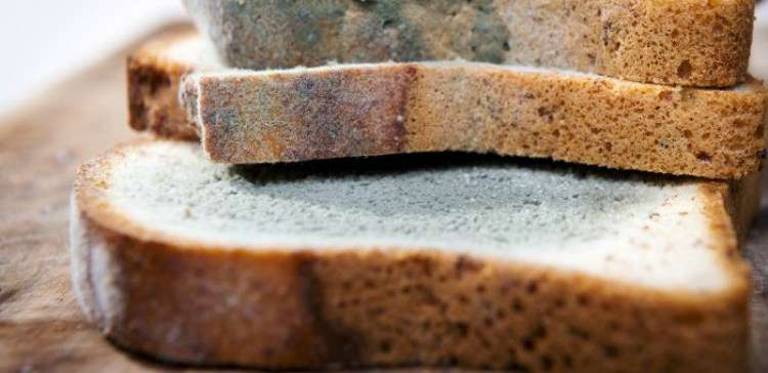Is it okay to eat around the mold?

You take out a loaf for your morning toast and see the telltale fuzzy green dots. Mold. Is it okay to use bread after cutting out the moldy spots?
No. You only see part of the mold on the surface of food — whether it's the gray fur on forgotten bologna, white dust on Cheddar, coin-size velvety circles on fruits, or the furry growth on the surface of jellies. When a food shows heavy mold growth, "root" threads have invaded it deeply.
Some molds cause allergic reactions and respiratory problems. A few molds, in the right conditions, produce "mycotoxins," poisonous substances that can make people sick. Some produce "aflatoxins," a cancer-causing poison produced by certain fungi in or on foods and feeds, especially field corn and peanuts.
Molds are microscopic fungi that live on plant or animal matter. Most are filamentous (threadlike) organisms and the production of spores is characteristic of fungi in general. These spores can be transported by air, water, or insects.
Unlike bacteria that are one-celled, molds are made of many cells and can sometimes be seen with the naked eye. Under a microscope, they look like skinny mushrooms. In many molds, the body consists of root threads that invade the food it lives on, a stalk rising above the food, and spores that form at the ends of the stalks. The spores give mold the color you see. When airborne, the spores spread the mold from place to place like dandelion seeds blowing across a meadow.
But some molds are beneficial, and in some cases molds can be cut away safely. Please see sidebar for more information.
Source: U.S. Department of Agriculture, Food Safety and Inspection Service: fsis.usda.gov.